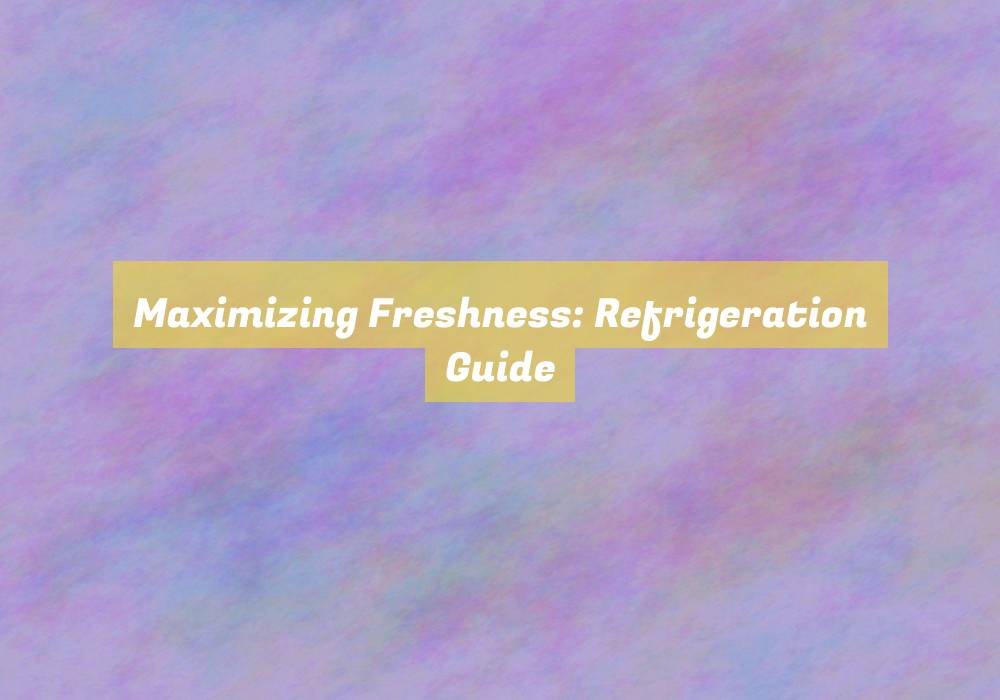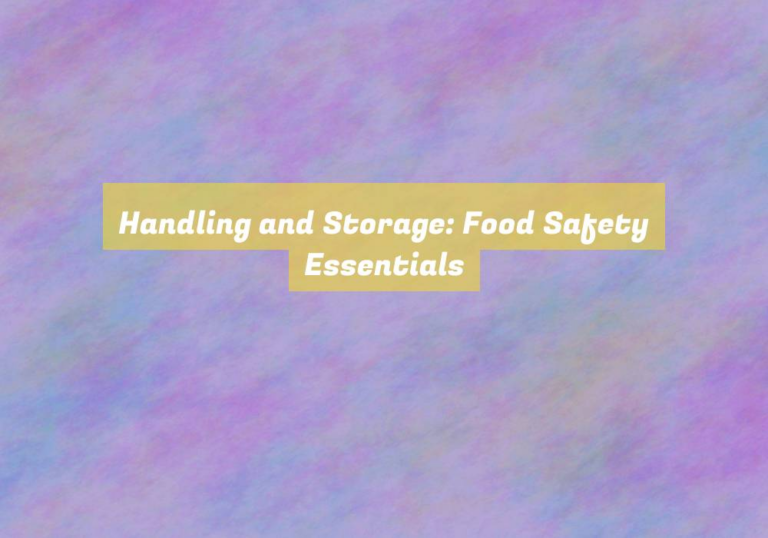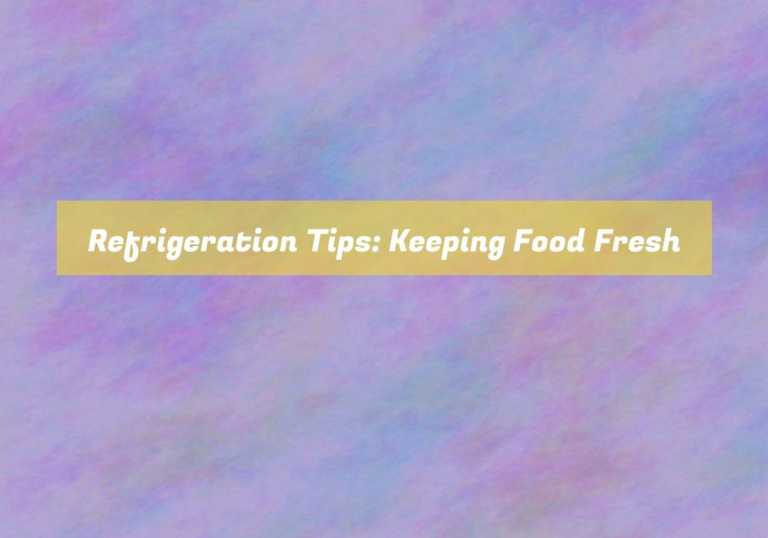Maximizing Freshness: Refrigeration Guide
To maintain maximum freshness in your refrigerator, proper organization and temperature control are key. Have you ever wondered how to optimize the storage of your perishables to prolong their shelf life and maintain their quality?
This comprehensive guide will provide you with practical tips and techniques for organizing your refrigerator, controlling its temperature, and storing various types of food to ensure that they stay fresher for longer.
So, if you want to make the most out of your groceries and reduce food waste, keep reading to discover the secrets to maximizing freshness in your refrigerator.
Refrigerator Organization Tips
To maximize space and efficiency, consider arranging your refrigerator shelves and drawers based on the frequency of use and the type of items stored.
Place commonly used items like milk, juice, and leftovers on the top shelf for easy access. This prevents the need to stoop down and reduces the risk of spills.
The middle shelf is ideal for items like deli meats, cheeses, and ready-to-eat snacks. ItG??s at eye level, making it convenient for grabbing ingredients during meal prep.
The bottom shelf is best for raw meat, poultry, and seafood to prevent cross-contamination.
Utilize the door shelves for condiments, dressings, and beverages, as theyG??re easily reachable when cooking or grabbing a quick drink.
Adjust the temperature settings in your refrigerator to ensure that different types of food are stored at the appropriate temperature. For instance, keep the coldest spot for perishable items like dairy, meat, and seafood, and the warmer areas for fruits, vegetables, and drinks.
This organization not only optimizes space but also helps maintain food safety and freshness.
Temperature Control Recommendations
Considering the organization of your refrigerator shelves and drawers, itG??s essential to now focus on setting the proper temperature controls to ensure the freshness and safety of your stored food items. The recommended temperature for your refrigerator is 37-?F (3-?C), while the freezer should be set at 0-?F (-18-?C). These temperatures help to slow the growth of bacteria and maintain the quality of your perishable items. Use a refrigerator thermometer to check and adjust the temperature settings as needed.
To prevent food spoilage and ensure food safety, itG??s crucial to maintain these recommended temperatures. Additionally, be mindful of overpacking your refrigerator, as it can obstruct airflow and lead to uneven cooling. Proper air circulation is essential for maintaining consistent temperatures throughout the refrigerator.
Regularly clean the refrigerator coils to ensure optimal performance and energy efficiency. Dirty coils can lead to inadequate cooling and temperature fluctuations. Moreover, consider the placement of temperature-sensitive items. For instance, dairy products and eggs are best stored on the shelves rather than in the door, where temperatures can fluctuate more.
Food Storage Guidelines
For optimal food storage, maintain an organized and clean refrigerator to ensure the freshness and safety of your perishable items.
Regularly check the expiration dates of your food items and dispose of any expired products.
Keep raw meat, poultry, and seafood in sealed containers or wrapped securely to prevent their juices from dripping onto other foods. Place these items on the bottom shelf to avoid cross-contamination.
Utilize airtight containers for leftovers and store them towards the top for easy access and visibility. Additionally, use clear storage containers to identify the contents easily.
Take advantage of the crisper drawers to maintain the quality of fruits and vegetables.
Keep dairy products and eggs on the middle shelf where the temperature is most consistent.
Be mindful of overcrowding the refrigerator, as it can restrict airflow and lead to uneven cooling.
Consider using refrigerator thermometers to ensure the temperature remains at 40-?F (4-?C) or below.
Freshness Maintenance Techniques
Maintain the freshness of your refrigerated items by implementing proper storage and handling techniques. Properly storing and handling your food is essential for maximizing its shelf life.
When storing items in the refrigerator, ensure that theyG??re in airtight containers to prevent moisture loss and cross-contamination. Additionally, organize your refrigerator to allow for proper air circulation, which helps maintain consistent temperatures and prolong the freshness of your food.
Regularly checking the temperature of your refrigerator is crucial for freshness maintenance. Ensure that the temperature is set to the recommended level, usually between 35-38-?F (1.6-3.3-?C), to keep your perishable items fresh for as long as possible. Furthermore, be diligent about rotating your food items to use the oldest ones first, reducing the risk of spoilage.
Proper handling is also vital. When handling fresh produce, be gentle to avoid bruising, which can accelerate spoilage. Additionally, promptly refrigerate perishable items after purchasing or preparing them to maintain their freshness.
Conclusion
Keep your food fresh and safe by following these simple refrigerator organization tips. By properly storing and organizing your groceries, you can minimize waste and save money in the long run.
Temperature control recommendations are also important to ensure food safety. Make sure your refrigerator is set at the proper temperature, usually between 35 and 40 degrees Fahrenheit. This will help prevent the growth of bacteria and keep your food fresher for longer.
In addition to organization and temperature control, following food storage guidelines is crucial. Store raw meats and seafood on the bottom shelf to prevent cross-contamination. Keep fruits and vegetables in separate drawers to maintain their freshness. And always check the expiration dates on your food items to ensure they are still safe to eat.
To maintain the freshness of your food, consider using freshness maintenance techniques. For example, transfer leftovers to airtight containers to keep them from spoiling. Label and date your leftovers so you know when they were prepared. And regularly clean and sanitize your refrigerator to prevent any odors or bacteria buildup.
By implementing these tips and techniques, you can maximize the freshness of your food and enjoy it for longer periods of time. So, take a little effort and pay attention to detail when it comes to organizing and storing your groceries. Your taste buds and your wallet will thank you.







